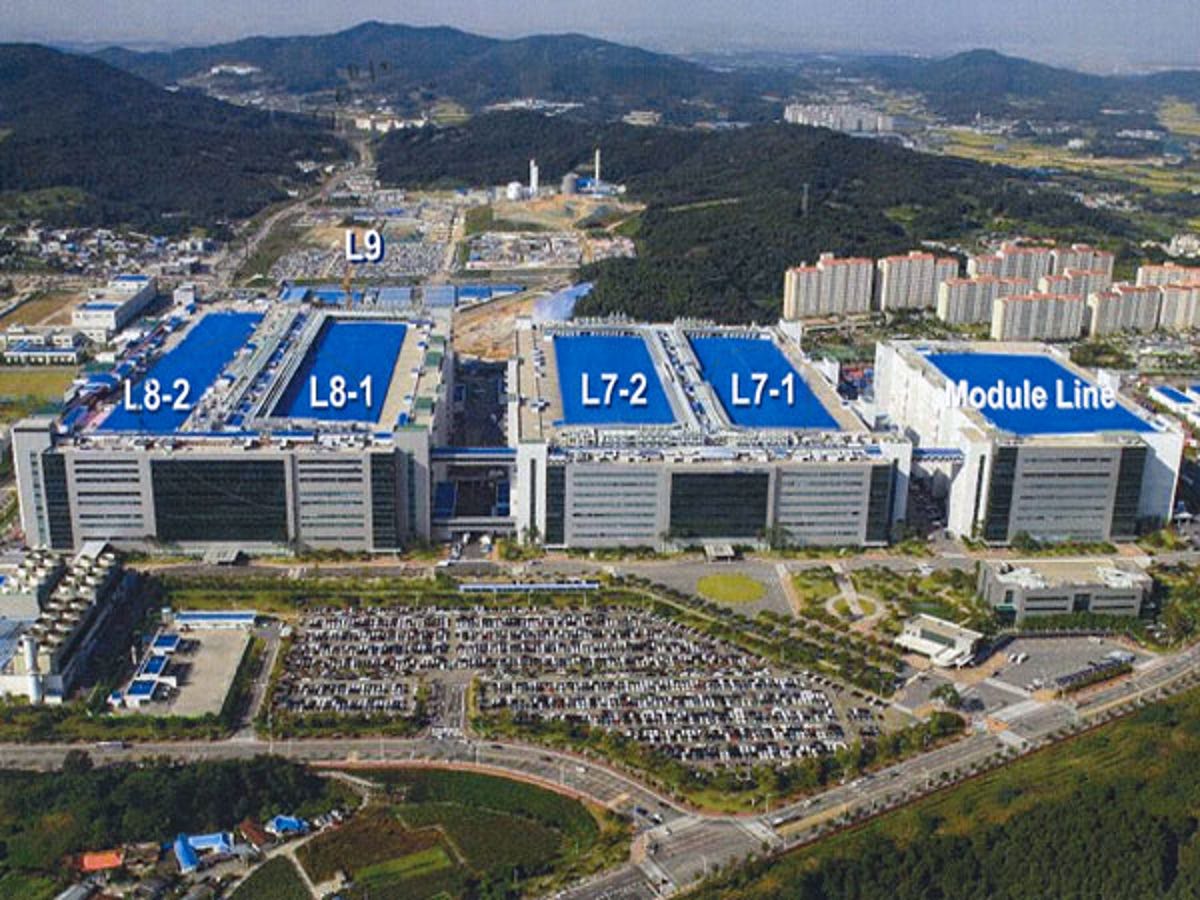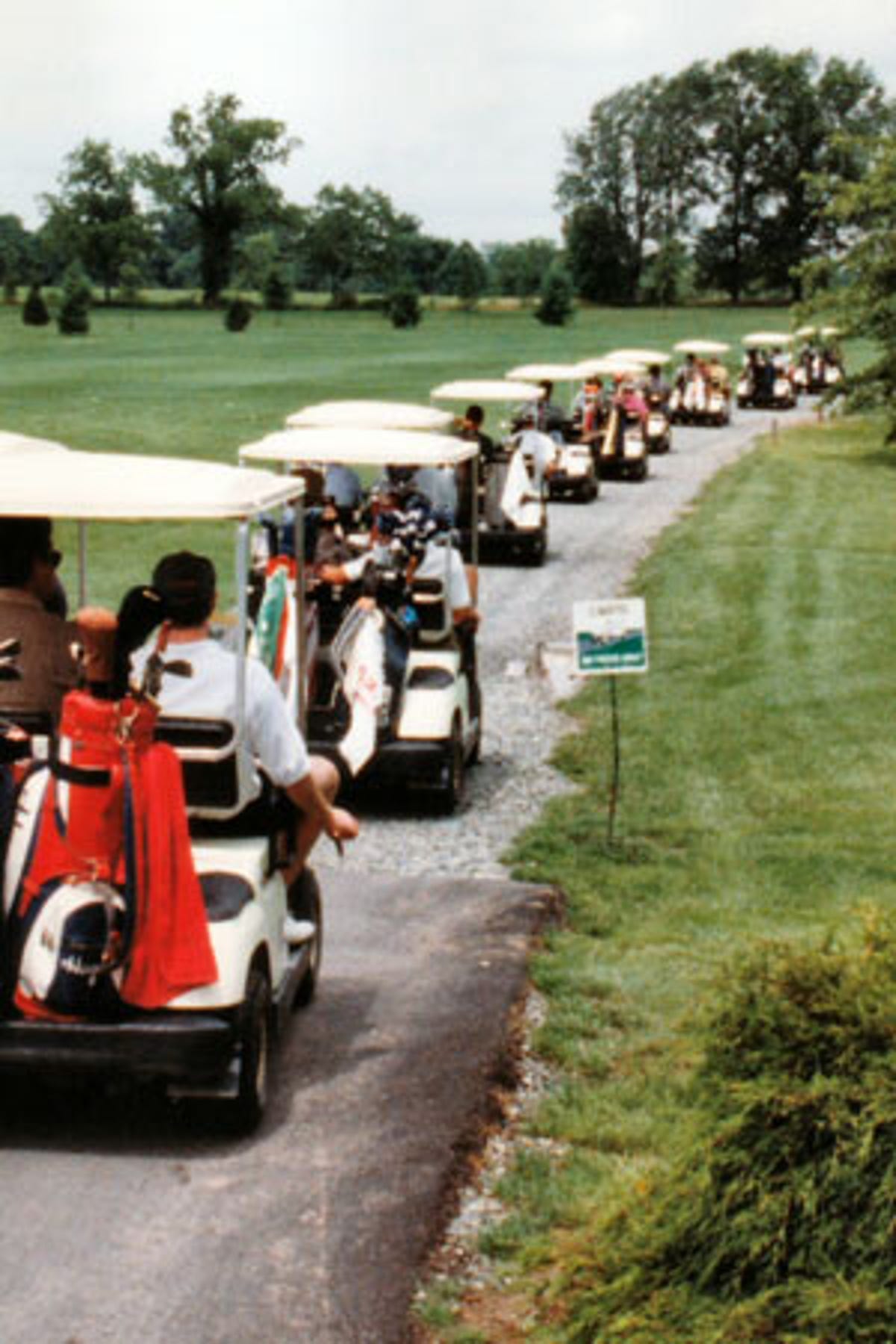Behind the scenes at Samsung's TV factory: Part II
In the second part of our Samsung LCD tour feature, we take a stroll along the LCD production line and look at what goes into the LCD screen itself.

Our lounge rooms are dominated by them, and most of our entertainment comes from them, but have you ever wondered how a television is made? Last time we looked at the design process, and how the bezel was made. This time we'll tour the nearby LCD factory where the panels themselves are made.
The other side
Compared to Samsung, LG's LCD factory at Paju felt like a ghost town — despite housing thousands of people on-site. Of course, the sub-zero temperatures at the time probably accounted for that. It was also doubly eerie because the LCD plant is the tallest building visible from North Korea — as it's so close to the border — and the army base built next door to protect it probably makes it even more of a target!
As VIPs we got to visit the "Victory Tower" on the top floor of the plant, and while you can see across the border with the naked eye they have a telescope set up so you can get a better view. All you can see are the empty "office buildings" built by North Korea and we felt a bit like we were peering into our neighbour's bedroom. However, we were quite tickled at the thought of someone with a telescope peeking back at us and trying to work out what the South Koreans were up to today.
While televisions of one type or other have been in Australia for over 50 years, they have gone through several changes, with flat panels the latest iteration. LCD TVs have been mainstream products for about four years, but what makes them tick? This year we were fortunate enough to have visited both the Samsung and LG plants in South Korea to get a better understanding of how an LCD TV is made, and what the future holds for the technology.
Samsung is one of the world's largest manufacturers of LCD panels, and it claims to produce one out of every four in the world. One of Samsung's largest facilities is in Tangjeong, 80km south of Seoul. Samsung has four different plants on this site, and this is where the joint Sony/Samsung S-LCD plant was first built — and still produces Sony panels to this day. CNET Australia visited Tangjeong recently and while we not only got a squiz at the production lines, we also met with the engineers and designers who helped make them possible.
Samsung's two main facilities had dozens of 20-something year olds wandering around sculpted gardens with huge planters filled with purple flowers acting as road dividers. They felt more like universities than industrial think tanks.
Inside the factory
The Tangjeong factory is a large facility south of Seoul, and produces panels for the five-year-old S-LCD collaboration between Sony and Samsung. As a result of this union, Sony owns part of the production lines on the Tangjeong site — this equates to 50 per cent of the L7-1 line, plus half of the combined L8 (1 and 2) lines. The L8-2 factory has only come online in the last month.
Samsung has begun planning its ninth plant, which will produce its Generation 11 panels (L9), and this will fit in behind the two existing factories. It will be capable of producing much larger panels than the L8 plant with 40, 62 and 72 inches possible.
We got to see one of the L7 (no relation to the LA-based band) lines in operation, after donning the fetching blue shoe covers. Unfortunately, we were unable to take photos inside the LCD factory, as apparently corporate espionage is a big problem. However, we'll do our best to explain the long corridor with its helpful blue signs and series of LCD panels in various states of undress explaining each part of the process.
The set-up to these "demonstration" factory lines doesn't seem to change from factory to factory, but we wouldn't appreciate working in one of these "fish bowl" situations. Imagine if you had to work behind a long glass corridor with all of your things labelled with blue signs and thousands of strangers peering in at you. It's like a factory zoo!
There were several different "lines" in each factory — each doing a different sized panel. Apparently it takes three days to convert one line to produce another size, so there is some redundancy built into the system to cover for any downtime.
Ty Pendlebury travelled to South Korea as a guest of Samsung.
Sony owns half of the L8 facility on the left, and a quarter of the L7 facility on the right. Behind them is the proposed site for the L9 plant.
The screens manufactured on the site are cut from glass of two different sizes. The older L7 plant is capable of processing glass at a size of 1.87x2.2m, while the newer L8 facility is capable of a larger 2.2x2.5m.
As this exploded panel demonstrates, there are at least eight different layers to one panel. The metal top chassis followed by the panel itself, which is mounted inside the middle chassis. Next is the Dual Brightness Enhancement Film (DBEF) which is designed to provide a high brightness over a wide viewing angle. Behind it are a set of prisms and diffusers used to guide the light from the last layer — the backlight itself. As we've discussed previously, LCDs need a backlight to work, as they don't emit light by themselves.
The panels themselves are cut from glass in a different part of the facility and moved via conveyor belt to the start of the L7 line. Here they are stored until they are needed. Each panel then goes through a series of different processes, attaching Integrated Circuit boards and polarisers along the way.
The polariser is important because it controls the way light is channelled through the screen and discards ambient light leakage — thus increasing contrast levels. Attaching the polariser is one of the most crucial parts of the process because any bubbles between the panel and the polariser mean defects, and so bubbles are vacuumed out of the panel first with a large suction machine.
After this the "tab IC" is attached — it's a small flexible sheet that interfaces between the screen and the television's electronics. The tab itself looks like the leading edge of a roll of film, and even comes on something similar to a projector reel. A small printed circuit board (above) is then attached to the tab, and a television's bezel exists primarily to hide the PCB.

The coolest part of the tour was next: benevolent, laser-guided, golf-cart robots transported panels across a space of about four metres so they could continue to the next part of the assembly line. We're sure Samsung was just showing off — why build dodgem cars guided along by red lasers when you could just install a travellator — or maybe even move the next section a bit closer. Imagine the scene above but with less people, and more lasers.
(Traffic Jam image by Joe Zlomek, royalty free)
After the flat, treated glass is tested it's then bonded to the metal chassis and backlight. At present, the backlight and panel themselves cost about the same amount to manufacture, and that's just for the CCFL version (above).
The LED backlight as used in Samsung's "LED TVs" is even more expensive due to a lack of manufacturers — up to three times the cost of the panel. Instead of installing LEDs behind the panel, Samsung uses what's called an "edge-lit" configuration. LEDs are installed along the sides and top of the display and use a "light guide" to distribute the light evenly.
Each panel goes through five different stages of inspection, and the first three stages are automated. The first of these is an input test, which checks if the panel works once power is applied. Next is an aging test where the screen is subjected to 45-degree temperatures for two hours. The computer then completes its final check before it's examined by human technicians.
Unlike the stock Samsung photo above, technicians check the panels while they sit upright on the conveyor belt (instead of lying down) — moving their eyes over each part of the panel looking for defects in the backlight or dead pixels. In some cases (especially when we visited the LG factory) this can look quite creepy as the technicians sweep their heads from side to side very quickly as if caught in some sort of religious fervour. The panel flashes white, and then green, red and blue to help the process. While the panel itself has a backlight it lacks any picture processing guts, so to help in this process the panels "plug in" at the bottom and are fed the test patterns.
A finished panel, waiting to have the bezel fitted. According to our hosts, there are three different levels of quality, with the top "A" grade going out to customers. However, one in every 100 panel fails and is then given either a B or C grade. "B" grade may exhibit some faults but can be recycled panels for in-house signage, or sold to employees at a discount rate. The last "C" grade panels will have their parts recycled; however, if there is a problem with the backlight itself it is destroyed.

